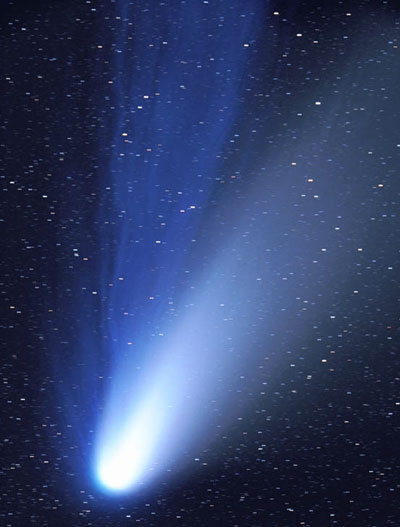 |
Астронет: Астрономическая картинка дня Пылевой и ионный хвосты кометы Хейла-Боппа http://variable-stars.ru/db/msg/1205868/eng |
Credit & Copyright: John Gleason
(Celestial Images)
Explanation:
In 1997,
Comet Hale-Bopp's intrinsic brightness exceeded any comet since
1811.
Since it peaked on the other side of the Earth's orbit,
however, the comet appeared only brighter than any comet in
two decades.
Visible above are the
two tails shed by
Comet Hale-Bopp.
The
blue ion tail is composed of
ionized gas molecules, of which
carbon monoxide
particularly glows blue when reacquiring
electrons.
This tail is created by the particles from the fast
solar wind interacting
with gas from the comet's head.
The blue
ion tail points directly away from the
Sun.
The light colored
dust tail is created
by bits of grit that have come off the
comet's nucleus
and are being pushed away by the
pressure of light from the Sun.
This tail points nearly away from the Sun.
The above photograph was taken in March 1997.
Authors & editors:
Robert Nemiroff
(MTU) &
Jerry Bonnell
(USRA)
NASA Web Site Statements, Warnings,
and Disclaimers
NASA Official: Jay Norris.
Specific
rights apply.
A service of:
LHEA at
NASA /
GSFC
& Michigan Tech. U.
